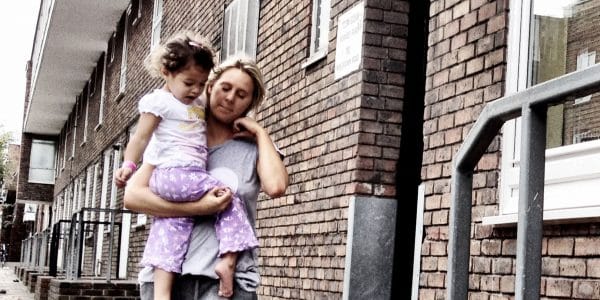
12/03/21
2 min read
The different roles played by men and women upon becoming parents, with respect to paid work and childcare, are a crucial part of the development of gender pay gaps. It is often argued that these stem from pre-existing gaps in earnings within male-female couples – since men already earn a little more than women, on average, even before they have children – which drive decisions around who reduces paid work once children are born.
But new analysis shows that this divide occurs even when the mother had the higher wage in the household pre-childbirth – as is the case for 38% of heterosexual couples where both partners worked before parenthood. In these couples, 13% of higher-paid women still leave paid work after their child is born – compared with just 3% of their lower-wage male partners. Of those higher-paid women who do continue to work, there is a significant reduction in working hours (a fall of 26% on average) while in contrast we see little or no reduction in the paid hours of fathers – even where they earn less than their female partners before their child is born.
Recent evidence from the pandemic points in much the same direction: even when mothers were the primary earners pre-crisis, their paid work was still interrupted more than that of their lower-earning partners in order to meet additional childcare demands.
These are among the main findings of new research published today as part of the ongoing IFS Deaton Review of Inequalities, funded by the Nuffield Foundation.
- The arrival of children is a crucial moment in the evolution of gender differences in careers over the life cycle. Women’s employment rates jump sharply down from about 90% to 75%, and average weekly hours of work for those still in paid work fall from around 40 to less than 30. This also marks the start of a long period over which women’s hourly wages stagnate – partly because working fewer hours tends to shut down wage progression – and hence is key to understanding the gender wage gap. Meanwhile, the paths of employment, hours, wages and earnings for men are largely uninterrupted by childbirth.
- This is not merely the exacerbation of career differences that already existed before childbirth. Men do, on average, already earn more (in total and per hour) than women before the arrival of children, and in families in which men were the primary earners before childbirth mothers’ employment rates and hours of paid work fall by 22% and 33% on average when children arrive. But even where women were the primary wage earners, their employment rates and hours fall by 13% and 26%, while their lower-wage partners’ career patterns barely change.
- Couples’ responses to extra childcare demands during the pandemic demonstrate the same point. Mothers did more housework and childcare irrespective of their pre-lockdown relative pay. Lower-paid mothers did double the amount of housework and 41% more childcare than higher-paid fathers, while higher-paid mothers did 6% more housework and 22% more childcare than lower-paid fathers.
Decisions couples make about how to balance paid employment and parenting are not based solely on who earns more, but they do have long-term consequences for mothers in terms of salary progression and a widening of the gender pay gap. Policies designed to address that gap need to be based on understanding of the role of social norms in driving decisions made by parents, which are evident in how mothers have picked up the additional parenting demands resulting from recent school closures. Parental leave policies and employer practices primarily focused on women will reinforce such effects. Policy also needs to take account of wider systemic problems in the labour market that see part-time employees, who are much more likely to be women, financially disadvantaged compared to those who work full-time.Mark Franks, Director of Welfare, Nuffield Foundation
The gendered roles of men and women in paid work and childcare after heterosexual couples start families play a crucial part in the development of the gender pay gap, and gender differences in careers more generally. How these parents divide up paid work and childcare cannot be straightforwardly explained by (smaller) pre-existing differences in their career trajectories. Even where the mother was the main earner before having a child, she is much more likely to give up work or reduce her hours after becoming a parent than is the father. So the roots of these gender differences cannot all be traced back to which parent was in the better position, career-wise, to be the primary breadwinner. Attempts to understand and address gender pay gaps must consider the role of social norms and maternity and paternity policies – and the links between the two – in driving men’s and women’s roles after childbirth.Alison Andrew, Senior Research Economist, IFS





















































